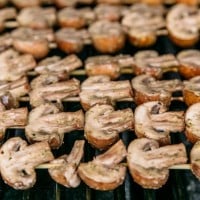Top 10 Amazon Rainforest Plants
The Amazon Rainforest, located in South America, is the largest rainforest in the world. It’s warm weather, and beautiful scenery makes it at travel must. It is also the home place of over a hundred animals. Of course, it wouldn’t be a rainforest without any plants. In the Amazon, there several exotic and colourful plants that help make the rainforest a wonderful getaway. This list countdowns the most favorited plants.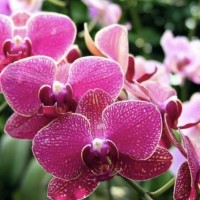
The plant that we all know, orchids are also found in the Amazon! While they are simplistic looking, they come in different sizes and shapes. Combined with their sweet, vanilla scent, they are not difficult to spot. These flowers leave a pleasant aroma in the Amazon rain forest.
The dark pink petals on orchids are very pretty and aesthetic. This is a very interesting list with some pretty looking plants for the images.
Orchids adds the beauty to the forests as well as the whole country.
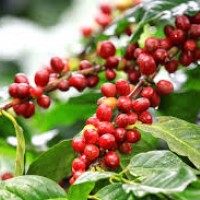
Another plant that is important to us. Coffee plants store coffee beans in them, which obviously is used to make coffee. Coffee beans provide many health benefits such as boosting energy levels, reduces risk of diseases as well as help burn fat.
Brazil is one of the main producers of coffee.
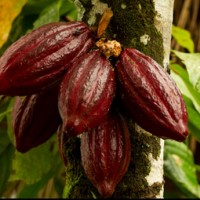
One of the most important plants for us all, because it provides none other than chocolate! As we all know, it's cacao beans are what we use to make chocolates. Not only does chocolate make classic and well loved deserts, it is also been proven that cacao can actually reduce the risks of developing heart diseases. Thus making it a healthy AND delicious necessity.
It is one of the good things about Amazon forest.
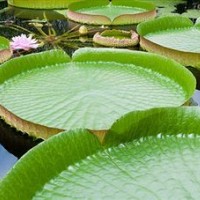
Located on the Amazon River, the giant water lily really does live up to its name. It is the largest lily pad in the world. The leaves are about 10 feet in diameter, and are strong enough to carry a small child! The water lily flower known as the Victoria Amazonica is also not just a petite dainty flower either. It is about 9 feet in diameter.
These sure are massive looking lily pads. It would make a decent home for frogs in my opinion, considering how frogs are nearby lily pads a lot.
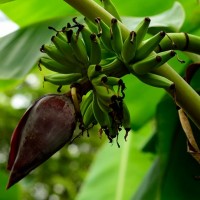
Banana Trees while also found in Southeast Asia, also grow in the Amazon. There are not difficult to spot as you will I'm immediately notice the banana hanging off of the branches. Not only do bananas provide a good source of nutrition, the banana leaves from the plant are also used in cooking as well as even a plate to put food on.
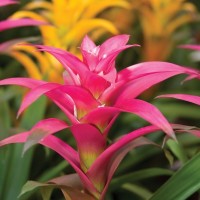
Found growing on tall rainforest tree branches. Bromeliads provide the perfect home for many insects, and their leaves are perfect for collecting rainwater. As a result, many animals consider this plant to be their source for water, thus making it a valuable plant in the rainforest. Another interesting thing that I discovered about bromeliads is that certain species can even grow fruit, the most notable one being pineapple!
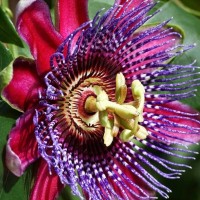
We all know passion fruit as something we eat, but it also happens to create a very unique looking flower! Passion fruit flowers can grow in different varieties, from a vine or even a small shrub. At the end, they are important to bees and even bats. Passion fruit flower has also been used to make medicine. And of course, they make passion fruit juice.
The passion fruit flower is very pretty and aesthetic looking. I love the design and colours. It's cool how it contains passion fruit juice as well.
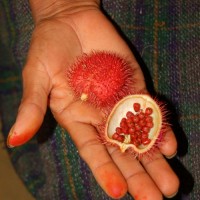
This fuzzy fruit like plant is used for orange and yellow food colouring in foods. It believed that they also provide a peppermint scent.
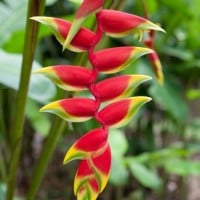
You may have seen a Heliconia when you were visiting a local garden centre. Heliconias are a well known plant in the Amazon due to its unique shape, which resembles a lobster claw, as well as its vibrant and striking colour. They can grow as tall as 15 feet, and are a source for nectar for hummingbirds.
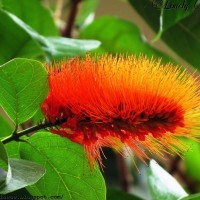
A very interesting looking plant, which resembles a brush or a fuzzy caterpillar. It's unique appearance is hard to miss. Sometimes they might be regarded as a parasite, if they grow in a different plant species. They are also the perfect food source for hummingbirds, providing nectar.
Fascinating list. A fun and educating read.
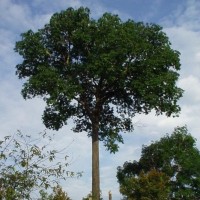
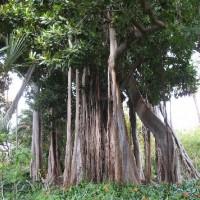
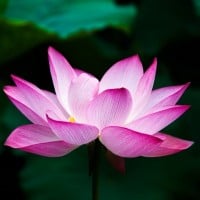
My favorite flower! It looks like it's glowing!
